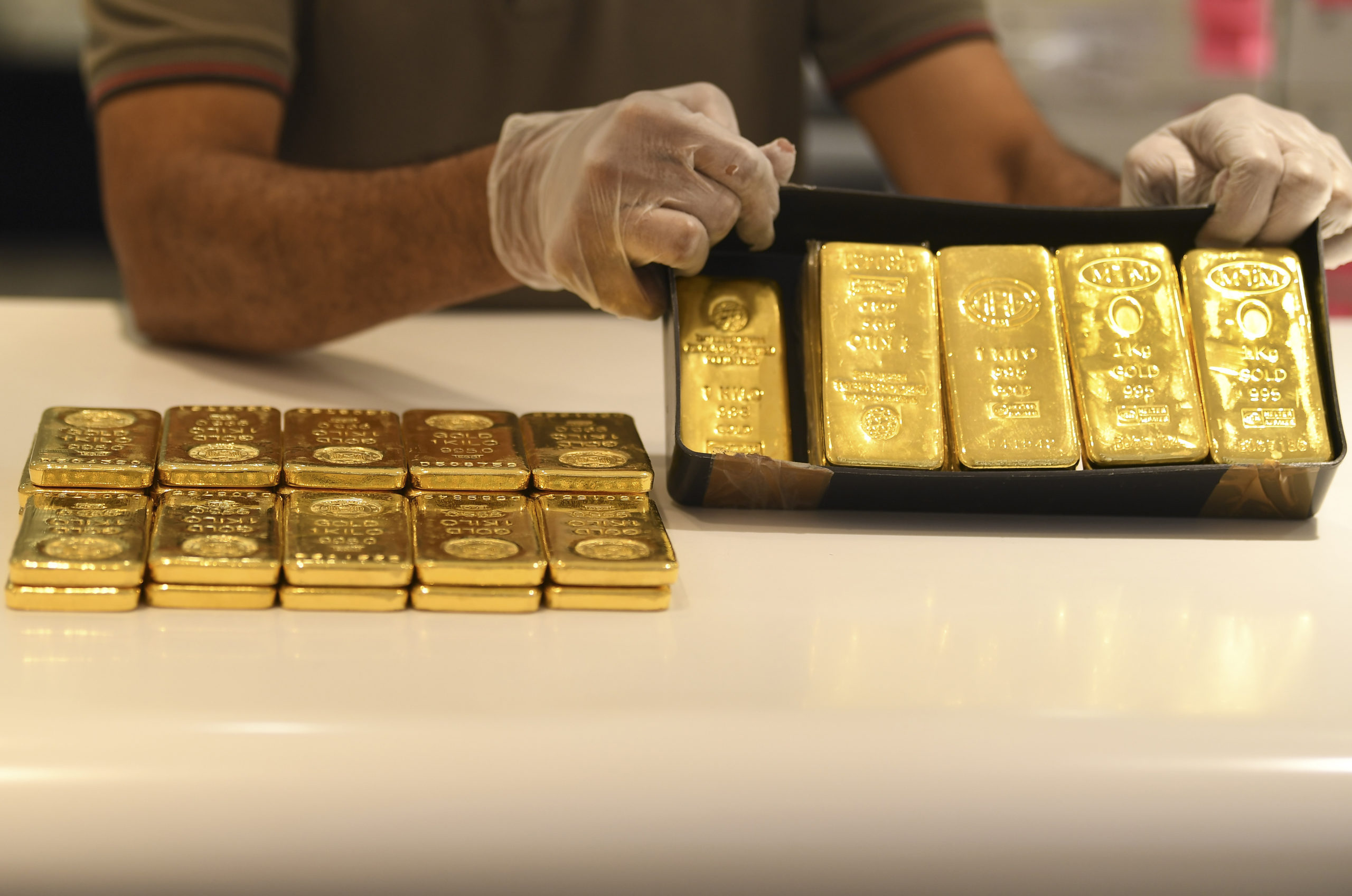
FILE PHOTO: A jeweler showcases bars of the shining metal at a shop at the Dubai Gold Souk in the Gulf emirate on May 13, 2020. (Photo by Karim SAHIB / Agence France-Presse)
LONDON, England — Gold reached record-breaking levels in September, buoyed by a bumper US interest rate cut, fears of rising geopolitical conflict, and an import tax cut in India that has galvanized local demand.
India, the world’s second-largest consumer of gold jewelry, cut the import tax on gold in July to six percent from 15 percent, sparking a significant increase in appetite for gold jewelry, bars, and coins.
The legislation has led to “soaring” local imports of the metal which has given “fresh impetus” to its upward price, explained Han Tan, chief market analyst at Exinity in an interview with Agence France-Presse.
Gold has been smashing records throughout September, reaching a new high of $2,685.58 an ounce on Thursday, up around 30 percent from the start of the year.
The sky-high prices have also been buoyed by gold’s status as a safe haven investment during times of economic and political uncertainty.
Investors have increasingly turned to the metal as conflicts in Ukraine and the Middle East unsettled markets for raw materials.
It’s also been lifted by the Federal Reserve’s jumbo 50 basis point interest rate cut in September.
READ: BSP defends sale of gold reserves
With falling returns on dollar deposits, major central banks have shifted reserves from the greenback to gold, in a process of “de-dollarization.”
The same dynamic has also benefited silver, which reached $32.71 per ounce on Thursday – its highest price since December 2012 – after soaring by around 35 percent in the first nine months of 2024.
Festival Season for gold
India’s resurgence in demand has revived excitement for the metal, after the market for gold jewelry had previously cooled as buyers were put off by high-prices.
Purchases of jewelry, which represent three-quarters of the Indian gold market, fell 17 percent in the second quarter of 2024 compared to that of the previous year.
To stimulate demand, India’s government cut the customs levy for the shining metal.
Its imports into India more than tripled in August from the previous month, doubling from a year earlier to $10.1 billion, according to calculations by the World Gold Council (WGC).
The reduction “boosted demand for gold in India as expected, as it makes the metal cheaper for buyers there,” Frank Watson, market analyst at Kinesis Money told AFP.
READ: Here’s why the price of gold is at a record high
The boost took full effect at the start of September as India’s festival season began, which includes the Hindu festival of Diwali – synonymous with purchases of gold bars, necklaces, rings and bracelets.
“After recent import duty cuts, retailers are restocking ahead of the festive and wedding season,” noted analysts at ANZ bank.
“Rising per capita income, a young population and urbanisation are supporting jewellery buying,” ANZ analysts added in a second report shared with Agence France-Presse.
Demand has also been reignited in India’s rural areas, driven by favorable monsoons which should “improve crop yields and help support the economy, boosting demand for gold as a portable store of value,” Watson told Agence France-Presse.
Meanwhile, the world’s biggest buyer of gold, China, continues to face a weak gold jewelry market in the context of the country’s ailing economy.
However, the country’s authorities announced measures this week aimed at stimulating demand.